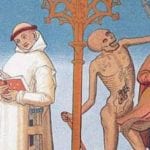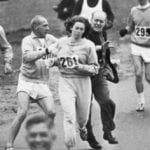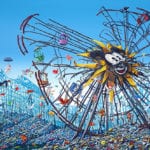 Weird Stuff
Weird Stuff  Weird Stuff
Weird Stuff  Our World
Our World 10 Ways Your Christmas Tree Is More Lit Than You Think
 Movies and TV
Movies and TV The 10 Coolest Stars to Set Sail on The Love Boat
 History
History 10 Things You Didn’t Know About the American National Anthem
 Technology
Technology Top 10 Everyday Tech Buzzwords That Hide a Darker Past
 Humans
Humans 10 Everyday Human Behaviors That Are Actually Survival Instincts
 Animals
Animals 10 Animals That Humiliated and Harmed Historical Leaders
 History
History 10 Most Influential Protests in Modern History
 Creepy
Creepy 10 More Representations of Death from Myth, Legend, and Folktale
 Technology
Technology 10 Scientific Breakthroughs of 2025 That’ll Change Everything
 Weird Stuff
Weird Stuff Ten Bizarre Facts About The Doge Meme
 Our World
Our World 10 Ways Your Christmas Tree Is More Lit Than You Think
 Movies and TV
Movies and TV The 10 Coolest Stars to Set Sail on The Love Boat
Who's Behind Listverse?

Jamie Frater
Head Editor
Jamie founded Listverse due to an insatiable desire to share fascinating, obscure, and bizarre facts. He has been a guest speaker on numerous national radio and television stations and is a five time published author.
More About Us History
History 10 Things You Didn’t Know About the American National Anthem
 Technology
Technology Top 10 Everyday Tech Buzzwords That Hide a Darker Past
 Humans
Humans 10 Everyday Human Behaviors That Are Actually Survival Instincts
 Animals
Animals 10 Animals That Humiliated and Harmed Historical Leaders
 History
History 10 Most Influential Protests in Modern History
 Creepy
Creepy 10 More Representations of Death from Myth, Legend, and Folktale
 Technology
Technology 10 Scientific Breakthroughs of 2025 That’ll Change Everything
10 Incredible Facts About Ernest Hemingway
Ernest Hemingway was one of the greatest writers who ever lived. We all grew up reading his books in high school and college, where we were told that his prose was some of the best ever written. But did you know he was the original manly man? He was a guy who shot sharks with machine guns, took on submarines with grenades, and pitted entire nations against each other. For example, did you know that . . .
10He Used To Fight People For James Joyce
There’s nothing better than learning that two contemporaneous legends were best friends, as Hemingway was with the Irish writer and poet James Joyce. The two often went out drinking together in Paris, where Joyce frequently started bar fights. How these fights got started is a mystery, for James Joyce wasn’t much of a fighter. He was quite frail, with eyesight so bad that most of the time, he couldn’t even see the person he was fighting.
Luckily for Joyce, he was best friends with a literary (and physical) heavyweight. Hemingway loved boxing, and even Jack Dempsey once said he was too afraid to spar with Hemingway because, in his own words, “I had this sense that Hemingway, who really thought he could box, would come out of the corner like a madman. To stop him, I would have to hurt him badly.” Whenever Joyce got into a fight, all he had to do was yell “Deal with him, Hemingway!” Hemingway then waded in and battered Joyce’s antagonist senseless, making Joyce and Hemingway the first and last tag team literary boxers in history.
Immerse yourself in the works of this classic author with the Complete Short Stories Of Ernest Hemingway at Amazon.com!
9He Was An Extreme Fisherman Who Killed Sharks With Machine Guns
In 1934, Hemingway used an advance on a book of short stories to buy an 11.5-meter (38 ft) pleasure yacht that he named Pillar and customized extensively. It was at this point that Hemingway became an expert fisherman. During the summer of 1938 alone, he managed to catch an insane 52 marlins. In fact, Hemingway was such a legendary fisherman in Cuba that Castro held the Torneo Hemingway fishing contest in Hemingway’s honor in 1960.
However, some of Hemingway’s methods could be described as unorthodox. For example, in 1935, he caught a shark. That’s not unusual in itself, but while wrestling the shark onto the boat, he somehow managed to shoot himself in both legs with a Colt revolver. Later, in another event that influenced The Old Man And The Sea, he managed to catch the biggest fish on record. Hemingway and his friend Mike Strater hooked a marlin that was believed to have been over a gigantic 4 meters (13 ft) long and fought for hours to reel it in. When a group of sharks started circling, Hemingway fired a Thompson machine gun at them, but shooting the sharks simply bloodied the water and attracted more of them. By the time the fish was brought aboard, it had been torn almost in half, but what they had still weighed 227 kilograms (500 lb).
8He Hunted U-Boats For The Hooligan Navy
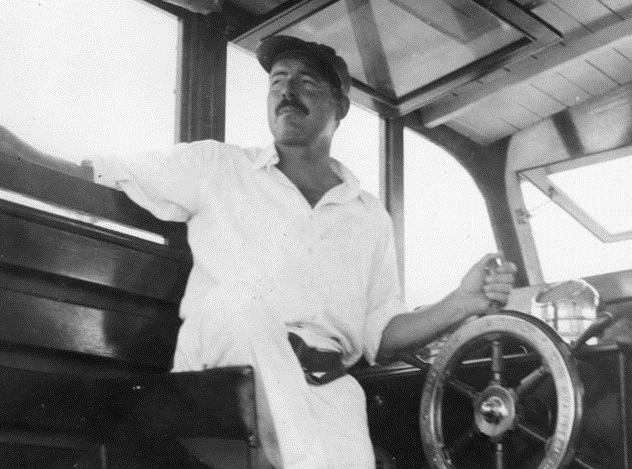
In 1942, German U-boats were sinking US freighters. The Navy, still reeling from the heavy losses of Pearl Harbor, were forced to ask civilian volunteers to help patrol the coast in private yachts. These volunteers came to be known as the “Hooligan Navy.” Members of the Hooligan Navy simply carried out patrols and reported their sightings back to land via radio—except for one.
Hemingway proclaimed himself a captain and began to patrol off the coast of Cuba with the intention of actually sinking any U-boats he spotted with a combination of Thompson machine gun fire and hand grenades. He gathered a motley crew of bullfighters, Basque jai alai players, a billionaire businessman, and a US Marine. Hemingway reasoned that, upon spotting a ship like Pillar, a U-boat would surface and come in close, using its on board guns to conserve its limited torpedoes. His plan was to get as close to the surfacing U-boat as possible so that the Basque jai alai players could toss grenades at the sub’s conning tower while the crew sprayed it with machine guns. As exciting as that sounds, it should be noted that Hemingway never sunk or even spotted a single U-boat, which has led some people to speculate that Hemingway “patrols” were simply an excuse to go fishing and get drunk with his buddies.
7He Went Rogue While Carrying Out War Correspondence
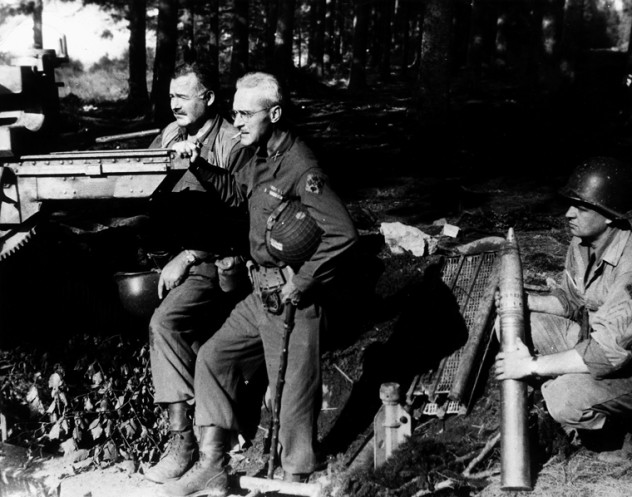
In 1944, Hemingway worked as a war correspondent for Collier’s magazine. He had covered other wars as a journalist before, but at 44 years old, he was no spring chicken. He was present at D-Day, but he was made to stay onboard because the military considered him too “precious” to lose. They quickly learned that Hemingway was not someone who could be looked after or told what to do.
While traveling with the 22nd Regiment, Hemingway somehow obtained military permission to run an intelligence operation in the town of Rambouillet. Soon, he became the leader of a ragtag militia made up of one secret agent and several French soldiers and civilians who followed his orders without question while calling him “Papa,” “Captain,” or even Le Grande Capitan. The “irregulars,” as they became known, were described as a band of cutthroats who idolized Hemingway to such a degree that they would even copy his mannerisms and style. Hemingway’s irregulars swelled to hundreds as more and more civilians and French troops joined. Meanwhile, they carried out surveillance ahead of the main column of support. Hemingway even wore a colonel’s uniform and led them into battle several times.
Although Hemingway had been cleared to run his operations, a war correspondent fighting in an actual war is a violation of the Geneva Convention, as he had used weapons, shot people, and impersonated a military official. Hemingway faced court martial but simply lied his way out and went straight back to the war, where he took part in a huge battle at the German border in November 1944 where 33,000 American troops were killed. Of course, Hemingway survived, and two years after the war ended, he received a bronze star.
6He Fought Orson Welles
In 1937, Orson Welles was hired to narrate The Spanish Earth, a documentary by Joris Ivens. Hemingway had written the narration, and when he heard Welles reading it out loud, he was quite vocal about the fact that he didn’t like the way Welles’s voice sounded. When Welles suggested some changes to Hemingway’s script, mainly that vast portions of it be cut, Hemingway got angry. The squabble quickly turned nasty when Hemingway declared indignantly “Some damn f— who runs an art theater thinks he can tell me how to write narration.” Welles responded sarcastically in a faux camp voice, belittling Hemingway for his machismo.
Soon, the two were fighting for real. The fight somehow ended up onstage in front of the documentary. As moving pictures of fighting and war flashed before them, Welles and Hemingway slugged away at each other in front of the screen. They later made up and became good friends. However, that didn’t stop Hemingway deleting Welles’s entire narration and recording his own.
5He Was A Cat Person
In 1931, Hemingway was given a very special cat. She was a white polydactyl, meaning she had six toes due to a genetic mutation, and he called her “Snowball.” Hemingway became obsessed with this rare mutation and ended up with about 50 of them running freely around his Key West property. In fact, Hemingway did so much to promote the breed through his writing that polydactyl cats are now sometimes referred to as “Hemingway cats.”
These days, Hemingway’s Key West house is a museum. If you’re ever lucky enough to visit, you’ll instantly notice that there are polydactyl cats everywhere. All are different breeds, but nearly all of them have six toes. The cats are allowed to roam free and do what they like, and nearly all of them are direct descendants of Snowball. It seems that Hemingway’s feline friend was as much of a free spirit as he was.
Discover what it means to put pen to paper and create something beautiful and meaningful. Get all the advice from the master with Ernest Hemingway on Writing at Amazon.com!
4He Believed He Was Under Government Surveillance
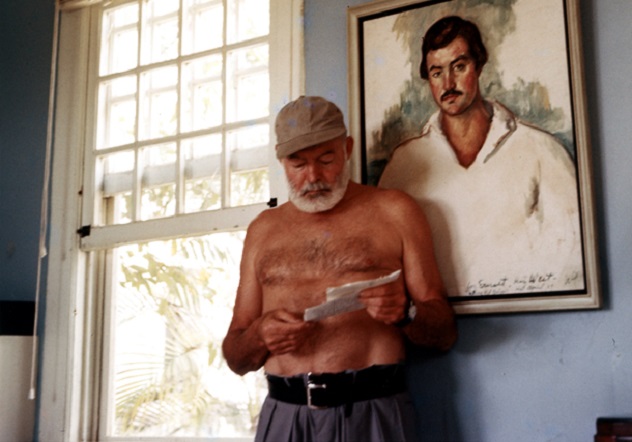
Toward the end of Hemingway’s life, he was emotionally drained, mentally exhausted, and extremely paranoid. It was his belief that he was being followed, bugged, and spied on at all times by “the feds.” While driving, Hemingway was convinced that other cars on the road were following him. He left bars because he believed that random people were watching him. He even declared one night while driving past a bank that two employees who were working late were actually government agents auditing his personal account.
As Hemingway grew more and more insistent that he was being spied on, his family and friends became concerned. What followed was a stay in a psychiatric hospital and the administration of electric shock therapy, a common treatment for mental illnesses in the ’60s, but that only seemed to make things worse. The FBI were everywhere, his phone was still bugged, etc. Then came the suicide attempts, and unfortunately, he eventually succeeded in taking his own life, an event made even more tragic by the fact that he had every right to be paranoid.
3He Really Was Under Government Surveillance
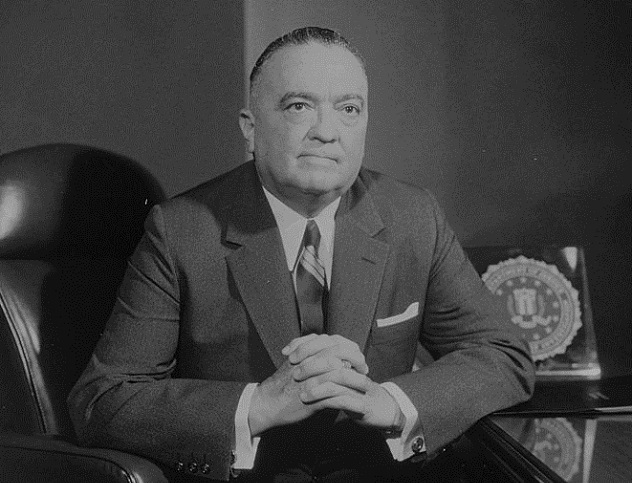
Hemingway is probably the world’s greatest example of the old adage “Just because you’re paranoid doesn’t mean they’re not out to get you.” For years, people believed that Hemingway’s paranoia was simply a sign of his growing madness. However, while most of Hemingway’s friends thought that he was going over the edge of sanity, he actually was being watched by the FBI.
In 1983, years after Hemingway’s breakdown and suicide, documents released under the Freedom of Information Act revealed that J. Edgar Hoover had personally been involved in his surveillance—and there was plenty of it. The document that detailed the investigation was 127 pages long. All of Hemingway’s paranoia was spot on—the feds actually were bugging his phones, following his car, and auditing his accounts.
Why was the FBI watching America’s greatest living writer? J. Edgar Hoover was generally suspicious of writers, as evidenced by his harassment of George Steinbeck, making sure that Steinbeck was continually audited simply to inconvenience him. Hoover was afraid of Hemingway due to his fame and the level of respect people held for him. He was also suspicious of Hemingway’s links to Cuba. Hoover may have been right to be worried about Hemingway, just not for the reasons he thought he should be, because . . .
2He Was A Spy For The KGB
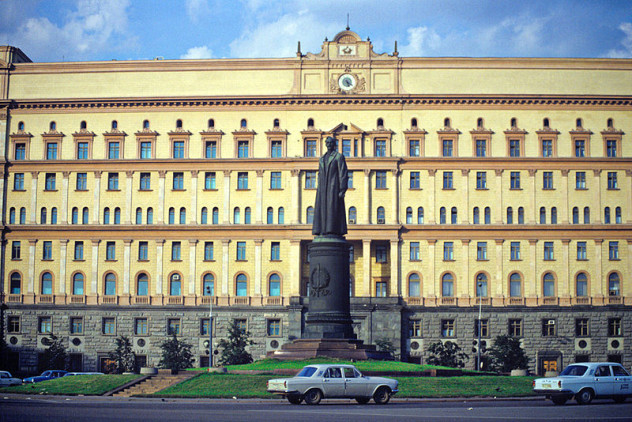
During the 1940s, J. Edgar Hoover spied on anyone he mistrusted. Usually, these people were famous, members of the intelligentsia, or simply anyone who disagreed with him. We’ll probably never know whether Hoover actually had any information on Hemingway, but we do know now that Hemingway was a KGB agent all along.
The reveal came from a former KGB agent named Alexander Vassiliev who was given access to Cold War–era Soviet archives and noticed that Ernest Hemingway was noted as an asset, which is often a term for “spy.” Hemingway had met Soviet agents in Cuba and England, and the Soviet records claim he was very enthusiastic about helping them. They gave him the code name “Argo” and waited for the intel to roll in.
However, it turned out that Hemingway wasn’t a very good spy. The information he provided them was inconsequential or completely useless, so the KGB eventually gave up on him. Could it be that Hemingway was a double agent purposefully trolling the Soviets by providing useless information? Or was he just too much of a drunkard to be of any use? Unfortunately, we’ll never know for sure.
1Hunter S. Thompson Investigated Hemingway’s Suicide But Ended Up Stealing His Stuff
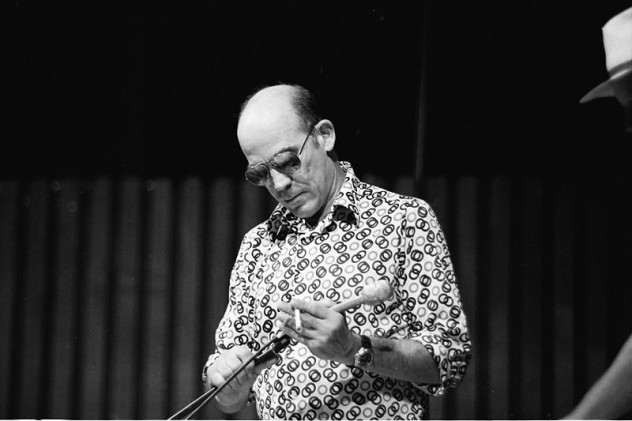
When Ernest Hemingway committed suicide in 1961, it shocked the world. He was a heavy influence on many writers, and they took his death pretty hard. One of those writers affected in a big way by Hemingway’s death was Hunter S. Thompson, a writer whose sordid life was reminiscent of his own.
In 1964, Thompson traveled to Ketchum, Idaho to visit the house where Hemingway retreated during the last two years of his life to write an investigative piece for The National Observer called “What Lured Hemingway to Ketchum.” Thompson wrote passionately about his hero but ended up concluding that Hemingway was “an old, sick, and very troubled man.”
While researching the article, he noticed that there was an impressive pair of elk horns hung above the door to Hemingway’s cabin. Thompson decided that even though he’d never do half of the crazy things Hemingway did, he could at least have a souvenir, so he did what any drug-addled ne’er-do-well would do—he stole them.
Aaron is a freelance writer and film student who wishes he had his own personal Hemingway to help out in bar fights. You can talk to him on Twitter.

